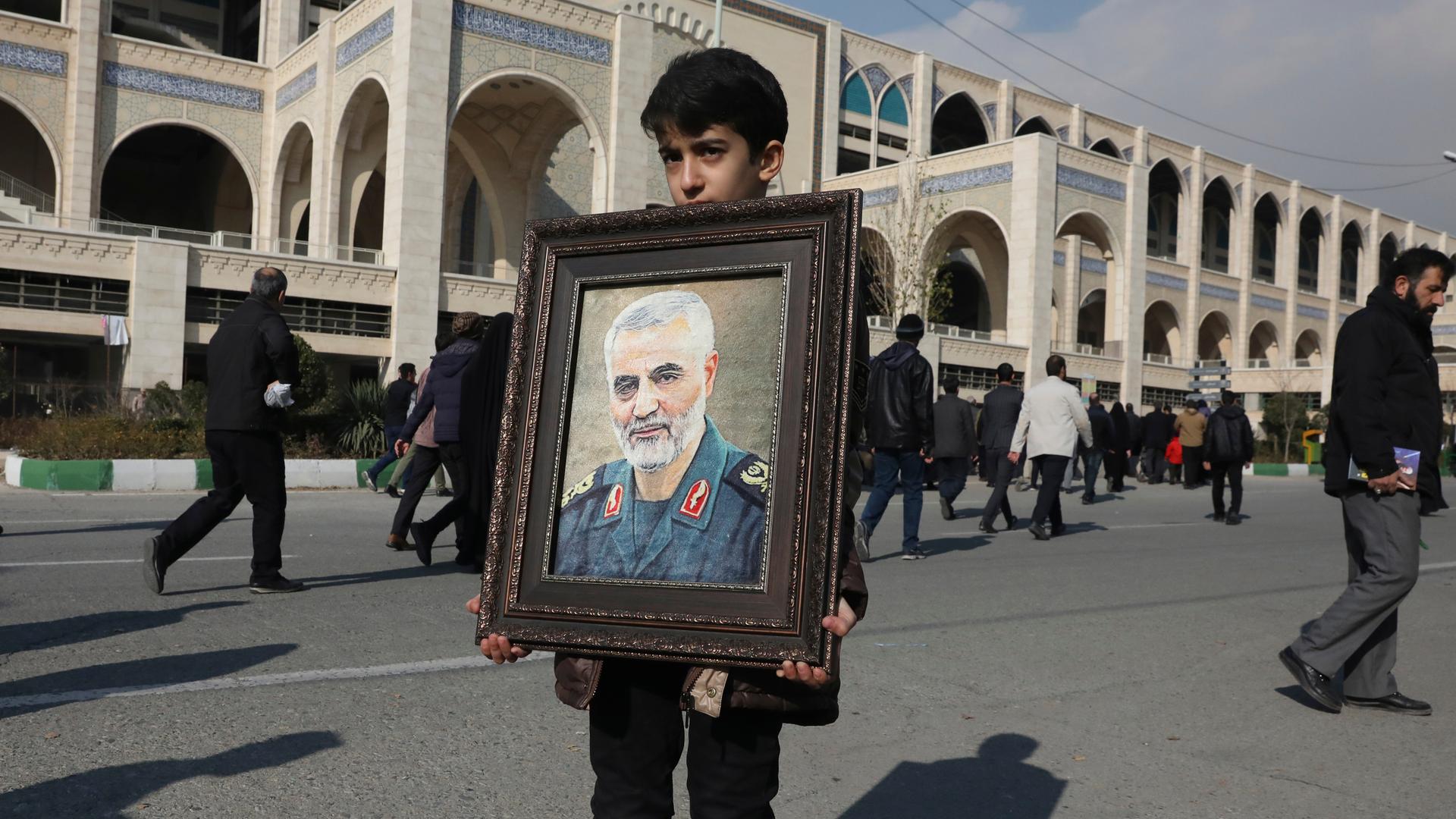The more likely scenarios are that Tehran would revert to nuclear enrichment and follow Ayatollah Khamenei’s call for ‘maximum pressure’ on the US.
The loss of General Qassem Soleimani is a major set back to Iran’s political structure and its military and security apparatus. As such it could be regarded as an important short-term victory for Iran’s enemies, mainly the US, Israel and Saudi Arabia.
It is likely to impact the Islamic Republic’s military manoeuvres in Syria, Iraq, Lebanon and Yemen. But how much of a long-term victory is this for the United States and its allies?
It is ironic that the US president Donald Trump, who on Friday sent 3000 extra troops to the region and ordered the killing of Iran’s top military strategist, says he took action “to stop a war not start a war”. Yet he did not consult with his European allies or other world powers, while its outcome is likely to haunt him.
Inside Iran the blow is unprecedented. Soleimani was the second most powerful figure after Iran’s supreme leader, Ali Khamenei. And amongst Iran’s leadership elite he was probably the most popular with the masses with an aura of invincibility. His success in defeating Daesh, or so called Islamic State group (IS), and clearing Iraq and Syria from US troops added to his charismatic appeal across the region.
His command-and-train relationship with the forces inside Iran and in the region, as well as his physical presence in intense war conditions, were always a mark of his popularity with the local forces. Russian military officials who worked with him during the Syrian war praised his strategic thinking.
The paramilitary groups he trained in Syria and Iraq and Lebanon became part and parcel of the military establishment of their country. These groups would now be seeking revenge too especially in Iraq where Abu Mahdi al-Muhandis, the second-in-command of Iraq’s Popular Mobilization Units (PMU) was also killed in the attack. Protests against the killing have raged in Iraq and Iran today.
Nevertheless, Iran’s response would be measured and would begin only after all the ceremonies and funerals have taken place. But in any revenge operation it is questionable whether the new commander of Quds force, General Esmael Qa’ani, would carry anywhere like the same weight of effectiveness and leadership. Yet Khamenei knows that he can count on his allies in Iraq, Syria and Lebanon, who will ensure a strong retaliation.
The top Shia militant leader in Iraq, Muqtada al-Sadr, has denounced the attack as “targeting jihad” and other militant Iraqi militia “pledged to avenge the death of both leaders”.
So if these groups pull forces together this would pose a serious threat to Washington and its allies in the region.
Over the past few months of regional confrontation between Iran and the US we have witnessed Iran’s military capabilities and heard from military experts that Iran can carry out sophisticated operations without leaving a trace.
Iran’s ambassador to the United Nations, Majid Takht Ravanchi, said the attack on Soleimani “was an act of war” by the US and that — “the response to a military action is a military action.”
Soleimiani had long been the target of attacks even since 2006 but he always recovered or the operations were foiled. Only recently Fars News affiliated with IRGC reported on October 3 that an attempt to assassinate Soleimani had been foiled. IRGC’s intelligence blamed it on Israel.
So, while the Israeli Prime Minister Benjamin Netanyahu has remained the only leader to praise the US strike, giving President Trump “all the credit for acting swiftly, forcefully and decisively,” Israel will not escape the reprimand either.
All indications are that the US has badly miscalculated the situation.
President Trump may be right in thinking that without Soleimani Iran’s effectiveness in the region would be reduced. He would also be right in thinking the most likely outcome inside Iran would be the weakening of IRGC and its affiliated forces and with it a weakening of the hardliners and the power of the supreme leader.
The problem arises when there is no follow up policy and no strategic thinking behind a major military action — a reality which has become the hallmark of US action in the Middle East.
Perhaps the killing of Qassem Soleimani was part of the US maximum pressure campaign to create a mass revolt inside Iran that would lead to regime change and a new US puppet regime at the helm. Or perhaps the plan was to bring Iran to the table, or win a point for a second term for Donald Trump.
But none of these are likely to succeed. Under the circumstances, the more likely scenarios are that Iran would revert to nuclear enrichment and IRGC and its allies in the region would follow Ayatollah Khamenei’s call for maximum pressure on the US.
Whatever the US motives, the safety and security of millions of people living in the region, or indeed American personnel working in the region could not have been a consideration.
Tehran has already intensified tough rhetoric against the US and its allies. Iranian news agency Tasnim quoted a senior IRGC General Gholamali Abuhamzeh as saying 35 US targets had been identified in the region, “as well as Tel Aviv” – the most populous city in Israel. He also raised the prospect of attacks on ships in the Gulf.
Author: Massoumeh Torfeh
Dr. Massoumeh Torfeh is a Research Associate at the London School of Economics and Political Science specialising in Iran and Afghanistan. Formerly she was a BBC journalist and UN spokesperson and director of communication.
Source










Discussion about this post